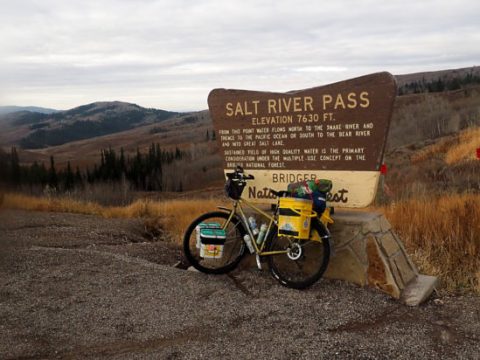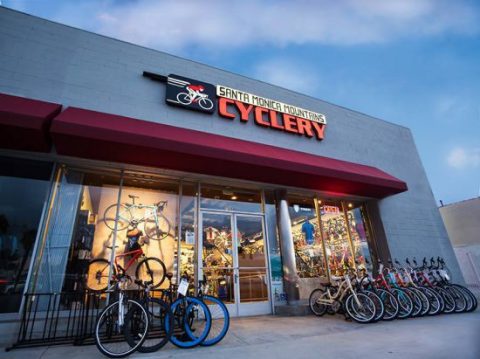
Just 48 days until LA fails to meet its Vision Zero pledge to eliminate traffic deaths by 2025.
………
We have a time-sensitive matter to discuss.
The Santa Monica City Council is going to address a motion to accept a $300,000 grant from the Office of Traffic Safety as part of their pro forma consent calendar at today’s meeting.
The purpose of the grant is to fund more Bicycle and Pedestrian Safety Enforcement Operations by the Santa Monica Police Department, in which officers ticket anyone who commits a violation on the road that could endanger vulnerable road users.
But as you’ll see below, that isn’t always enforced equally, fairly or equitably.
Longtime Santa Monica bike advocate and former LACBC Board Member Dr. Michael Cahn wrote the following open letter to the council, calling attention to the windshield bias and other problems inherent in these operations.
So I’m going to step aside, and let Dr. Cahn do the talking today.
You can do some talking of your own by contacting the Santa Monica City Councilmembers prior to today’s 5:30 pm meeting, to call for fairer police enforcement in bike/ped safety operations before approving Item 5D — particularly if you live, work or ride in Santa Monica.
And if you’re one of those unfortunate bike riders who was ticketed in one of the previous operations, they especially need to hear from you.
We’ll be back tomorrow, as usual, to catch up on anything we missed today.
……….
Dear Council Members,
Before you give a green light to the OTS Grant for 300.000 $ for Selective Traffic Enforcement, let me give you some feedback, from the handlebars and from the sidewalk, looking back at how these grants have worked in the past.
They used to be awarded for Pedestrian and Bicycle Safety, and they were always conducted “through the windshield”. The motto was: Drivers are driving, now let’s keep the pedestrians and cyclists out of harm’s way. To do that we must ticket them when they ride their bikes on the sidewalk, we must educate them to cross at the intersection.
There is a big monster in town, it is called vehicle traffic, and it will snap a pedestrian, a cyclist here and there. The main job of SMPD Traffic Division is to keep the monster rolling through town, and keep those who use the streets without a license plate out of the path of this dangerous beast. Not exactly the best way to address the source of the danger, methinks.
It does not look good when an SMPD Sergeant is parked at the intersection and ignores how this Prius endangers the pedestrian in the crosswalk (Montana):
All photos by Dr. Michael Cahn
But the cyclist on the sidewalk is quickly found and stopped and “enforced”:
Sometimes crossing the intersection without a green light is safer for the cyclist, but the officer only cares about the rules:
SMPD knows that riding bicycles on Lincoln Blvd is hairy, so they do it on the sidewalk:
But the black kid is being hassled for doing the same — riding his bicycle on the sidewalk on Lincoln:
We all sometimes think cars can not be avoided. Our police force, too, is fully subscribed to this attitude. We once had a transportation management division in this city, but how do you manage the king of the American road? The car is in charge, but CicLAvias and other open streets events come and go.
And yet, we must manage and challenge all this driving. We must do less of it, and we must do it less often. And the SMPD, too, must project this goal of less driving. One way to do this is to contradict the idea that driving is always necessary (it is not), that we all drive (we do not). Imagine the citywide moment of education and insight that would happen if our own police department challenged the poison of motonormativity. Encourage the SMPD to challenge the notion that driving is the default. Let’s see these officers on their bicycles enforcing the law on Wilshire, for a change.
Yes, they do ride their bicycles on the beach path, but are they big and strong enough to do it in town? In town the bicycles are transported on the back of a car.
Chicken anybody?
SMPD avoiding ride bicycles on city streets (“we are not crazy”):
Every time the SMPD is not riding a bicycle in traffic, it gives us cyclists the sense that we are just a crazy suicidal minority. And it gives all the drivers out there the same message: Crazy cyclists. What we need from them is to share the road with us on a bicycle, and to bring their authority and their uniforms and their tickets to the bike lane, and to deal with the drivers parking on the bike lane, turning without indicating, overtaking dangerously, ignoring crosswalks, opening doors without looking. This should be part of the 300K grant from OTS!
You want safer streets in Santa Monica? Put your officers on bicycles and let them ride up and down Wilshire, up and down Lincoln. That is where the education and the enforcement needs to happen. Enforcement of our drivers, the single most dangerous road participants
You know you want to do it, just see how you imagined the SMPD as an all terrain mountain cyclists force. No road chickens here.
Please make approval of item 5D contingent on consideration of the following items
- Highly visible bicycle patrols on heavily trafficked streets: Film it, Share it: Show us and show the community that cars are not always necessary.
- Conduct Crosswalk Sting Operations on Montana, Wilshire and Santa Monica Blvd etc. Film it, Share it.
- Enforcement of drivers who stop or park on bike lanes.
- Enforcement of illegal parking and waiting around schools: Lincoln Middle School has crossing guards. Their good work is made impossible by parents defiantly waiting in their cars on bike lanes and in alleys in the vicinity. Saint Monica School proudly displays long lines of illegal parking and waiting on California Ave over multiple blocks.
- Revisit the sidewalk riding ordinance.
Thank you !
— Dr Michael Cahn
………
It’s now 328 days since the California ebike incentive program’s latest failure to launch, which was promised no later than fall 2023. And a full 41 months since it was approved by the legislature and signed into law — and counting.
………
Be safe, and stay healthy. And get vaccinated, already.
Oh, and fuck Putin























 Just to be clear, I haven’t received anything of value in exchange for this guest post, other than that box Kyoku to try out and review.
Just to be clear, I haven’t received anything of value in exchange for this guest post, other than that box Kyoku to try out and review. 





















































